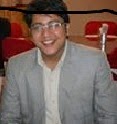 |
| Suresh Poudel |
The success of any development
effort of a country depends on its ability to absorb the outcomes of modern
technology. This is true for all facets of economic and social activities.
Generally developing countries lack such capacity. Often this lacking is due to
inadequate infrastructure, human capital, finance, commitment of leaders and
their willingness to do so. It is an undeniable fact that for setting a country
into a path of development, it should focus on development of science and
technology.
Experiences of developed
countries show that they were once a fertile land for technologies. Most of them are yet working hard to develop
new technologies. Only those countries which have invested heavily in science
and technologies are progressing leaps and bounds. They have been benefitted by
their home made and imported technologies. Technology is the application of
knowledge to practical purpose which ultimately innovates the way of performing
task assuring a better outcome in what we do. As a developing country, it might
not be possible for Nepal to invest heavily on development of science and
technology; however it shall prepare itself to build capacity to absorb the
recent outcomes of scientific development.
Since last century we have been
using different machines in disease diagnosis and treatment. These machines are
the outcomes of dedicated research and investments. Similarly ionizing
radiations have been used for diagnosis and treatment of diseases. To improve
the precision of diagnosis and treatment, the producers of such machines are
using the recent and exotic research findings. This has made the use of such machine is expensive.
Regarding Cancer diagnosis and
treatment, in recent years, there has been a huge development in the techniques
of imaging and therapy. In imaging conventional X-Rays, Mammography,
Angiography, Ultra-sonogram (USG) have been used for quite long. Magnetic
Resonance Imaging (MRI), Computed Tomography (CT), SPECT, PET Scans machines
are proving themselves as reliable machines for disease diagnosis.
Similarly radiotherapy has come a
long way from the days when the treatment was started with X-ray tubes, Van de
Graff generators and betatrons and cobalt-60 teletharapy units. Today we are
using moderns LINACS and modern Brachy therapy machines. As special techniques
in radiotherapy Stereotactic irradiation, Total Body Irradiation(TBI), Total
Skin Electron Irradiation(TSEI), Intra Operative radiotherapy(IORT), Endo
rectal Irradiation, Conformal Radiotherapy and Intensity Modulated Radiotherapy
(IMRT), Image Guided Radiation Therapy (IGRT), Respiratory Gated Radiation
Therapy(IGRT), PET/CT fused images, proton therapy and higher nuclide therapy
at our avail although the use of most of them by a common patient has been
limited by cost and shortage of manpower who has skills on using them. In
addition, there are many equipments, chemicals and accessories used in
medicines.
The price of these machines is
generally high for the obvious reasons that they are the result of huge
investment and dedicated efforts. But a mankind cannot stay away from being
benefitted from such grace of human efforts. Many developing countries lack
such services for the limitation of their resource. Nevertheless Governments of
these countries should not make an excuse for high price to import such
technologies to their country. They should find the ways to import these
technologies to their country and hence start building a necessary infrastructure
including skills and manpower to do that.
This will help every Nepali citizen to do cancer diagnosis and treatment
at home than going abroad. This will help a country to assure the right of
every citizen for health.
The writer is a member of Bangladesh
Medical Physics Society (BMPS) and student of Gono University, Savar,
Bangladesh.





